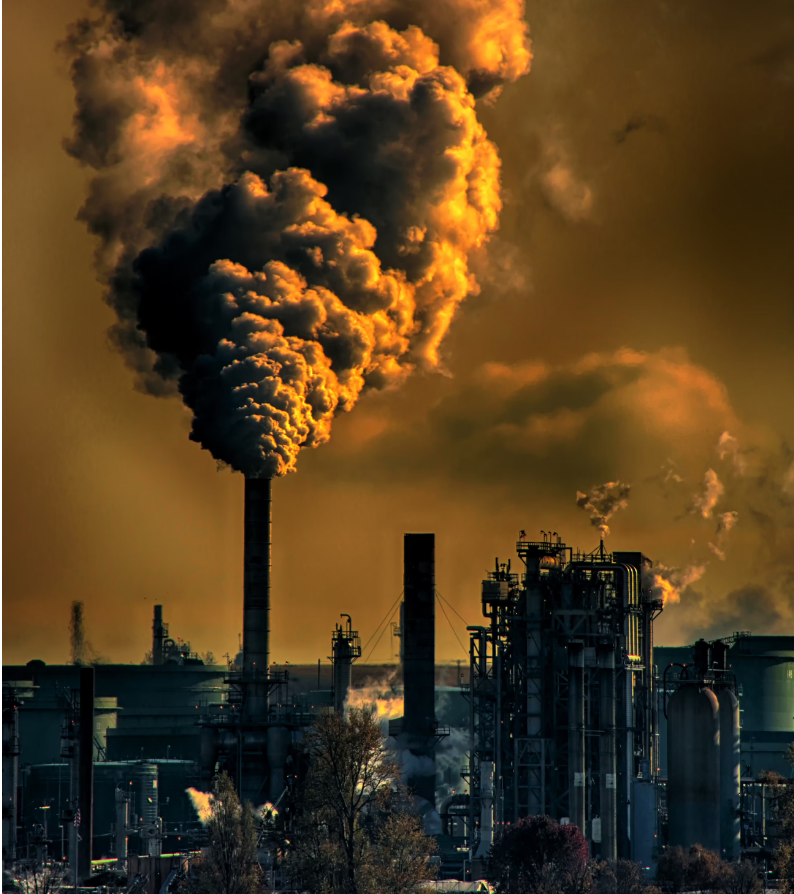Introduction
Many people may have heard about the relationship between CO2 and climate change. But you may not know that the amount of CO2 emitted by people makes up a much smaller percentage of global emissions than the CO2 released by natural sources. Despite being such a small amount, however, human-generated emissions make a huge difference because of the difficulties they have going through natural cycles to be absorbed.
What are greenhouse gases?
Carbon dioxide is a molecule consisting of one carbon atom and two oxygen atoms. It is one of the primary greenhouse gases that causes an increase in global temperature. This is because it traps heat, keeping the earth’s average temperature at 14º Celsius or 57º Fahrenheit. Greenhouse gases do not trap all of the heat; some of it is emitted as thermal radiation back into space. Their name comes from the trapping of heat, which is similar to the effect of the glass of a greenhouse.
Why is carbon dioxide the most important greenhouse gas?
Carbon dioxide makes up 80% of greenhouse gases, and it is the most common greenhouse gas produced by humans. As of December 2024, carbon dioxide makes up about 425 parts per million in the atmosphere. From 2022 to 2023, there was an increase of 2.8 parts per million, making it the twelfth year in a row with an increase greater than two.
Why does carbon dioxide affect the temperature?
The sunlight that hits the Earth turns into infrared energy, and the greenhouse gasses in the atmosphere absorb the infrared energy. Some of it stays in the atmosphere, and the rest is emitted back into space. The more greenhouse gases there are, the less likely it is that the infrared energy will go back into space, thereby causing the Earth to heat up.
How much do humans affect the amount of carbon dioxide in the atmosphere?
Beginning in 1955, carbon dioxide made up about 318 parts per million, then by 2000, it was up to about 380 parts per million, By late January of 2017, it was at about 406.6 parts per million. It is estimated that it will reach 500 parts per million by 2065, raising the temperature by an estimated 3 degrees celsius, or 5.4 degrees fahrenheit. This change in temperature will cause sea levels to rise dramatically, and this, in turn, will cause certain types of food to become unavailable as the places they are grown will have been flooded. It typically takes between 5,000 and 20,000 years for a carbon dioxide change of 100 parts per million to occur, but levels have changed by nearly 100 parts per million in less than 80 years.
Why can’t the carbon cycle cope with the extra carbon dioxide from humans?
Every year, 750 gigatons, or 750 billion tons, of carbon dioxide go through the carbon cycle. The average human output is 29 gigatons, or 29 billion tons of carbon dioxide each year, despite this being a small amount compared to natural carbon dioxide produced, it adds up over time. About 40% of the additional carbon dioxide goes through the carbon cycle, and the other 60% remains in the atmosphere. This has caused the level of carbon dioxide to reach the highest it has been in 15 to 20 million years.
Some people argue that human-generated carbon emissions from electric appliances and transportation are not affecting the world that much because we produce such a small amount of carbon compared to natural sources, such as decomposing organic matter and volcanic activity. Although it is true that human carbon emissions are much smaller than natural emissions, human contributions make a significant difference. This is because the carbon cycle is only able to cope with a certain amount of carbon dioxide, and roughly 60 percent of human carbon emissions can not be absorbed by plants. Over time this adds up, and the significant problem is the cumulative amount of carbon dioxide in the atmosphere – not just the annual emissions.
Conclusion
Human carbon emissions cause many issues that most people are unaware of, and many do not understand why carbon causes the earth to heat up. It is interesting how a relatively small amount of carbon dioxide released by humans – mainly through transportation – is still affecting the atmosphere in very significant ways through the cumulative growth of this CO2 over the years.








